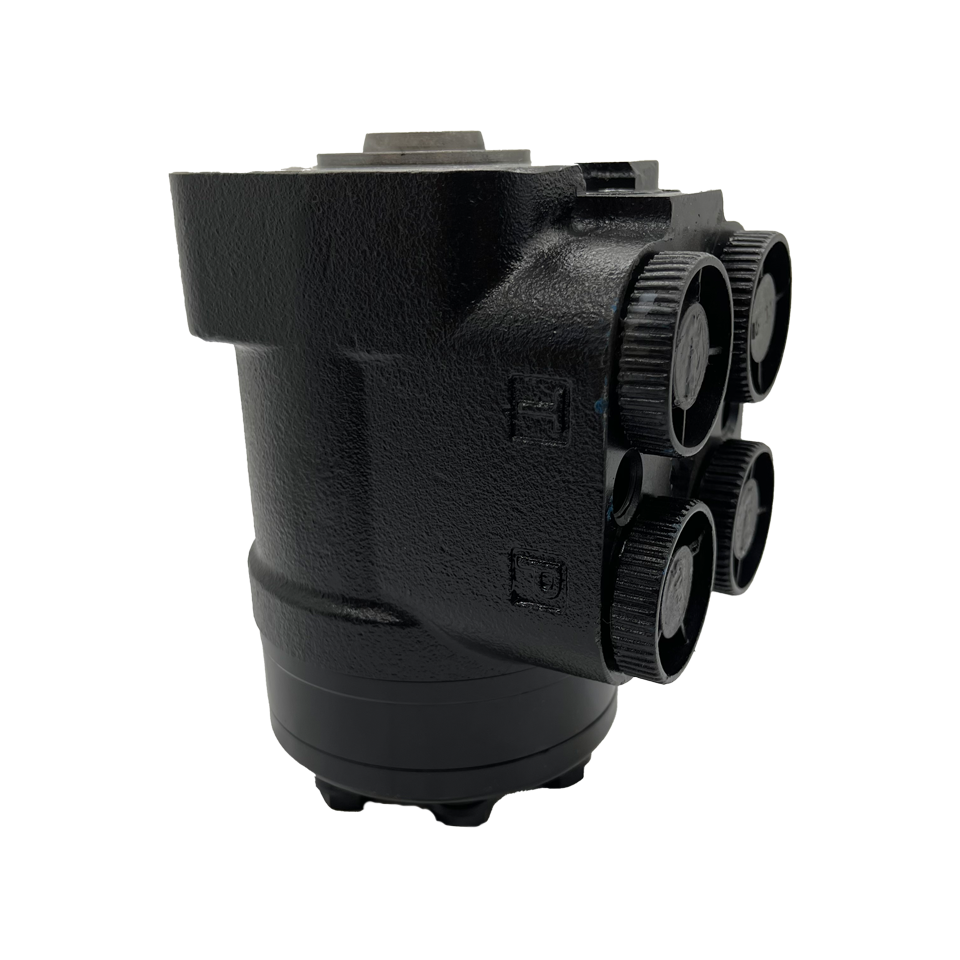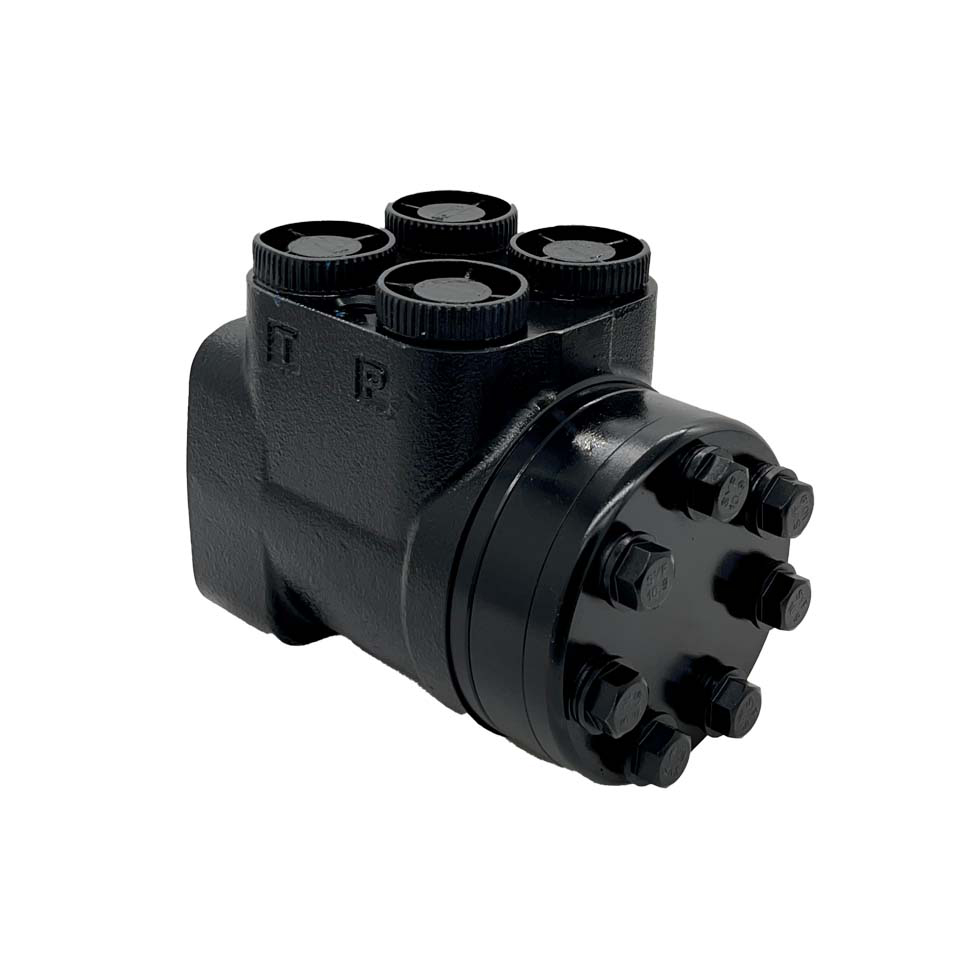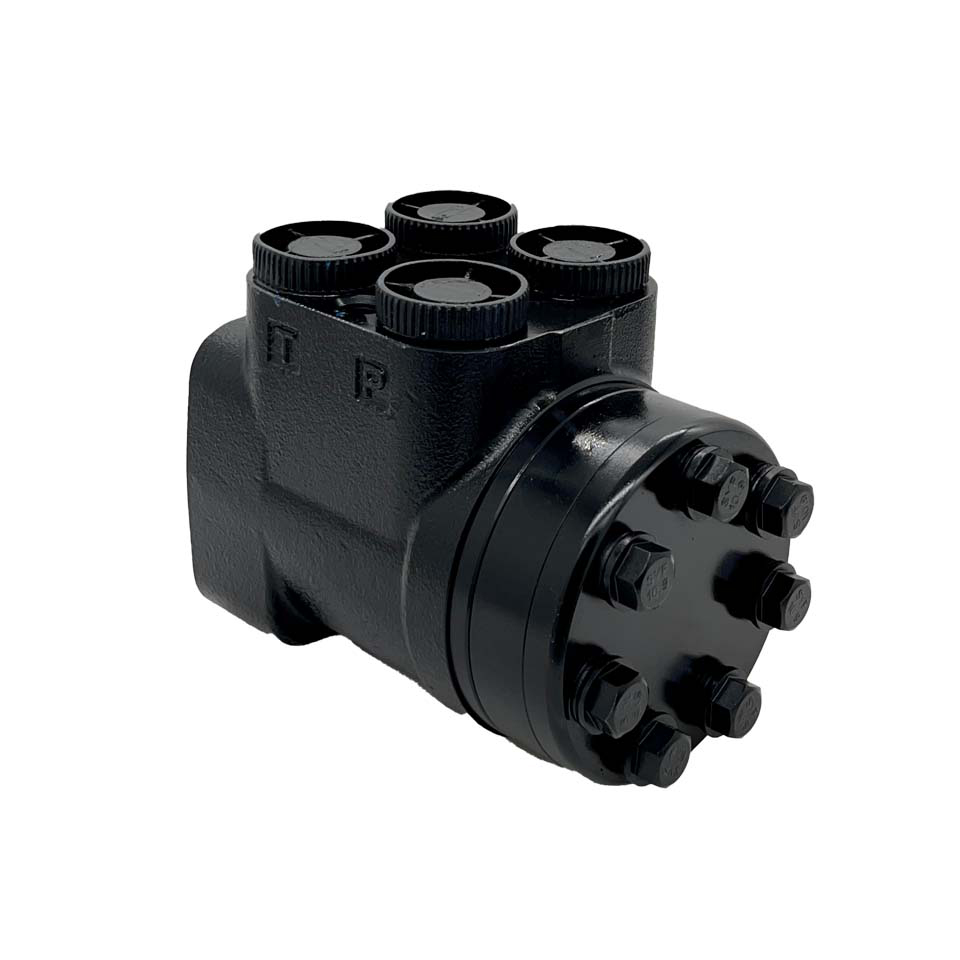A steering unit is a crucial component in various machinery and vehicles, responsible for controlling the direction of movement by directing the wheels or tracks of a vehicle or system. In automotive and heavy machinery applications, the steering unit helps transmit the operator's input into movement, allowing precise control over the vehicle's path. It typically consists of a steering gear, a hydraulic pump (in the case of power steering systems), a steering column, and various linkages and components that work together to facilitate turning and maneuvering. Steering units are designed to convert the rotational movement of the steering wheel or lever into the linear movement of the wheels or tracks. The hydraulic steering unit, commonly found in larger vehicles like trucks, construction machinery, and agricultural equipment, provides power assistance, making steering easier by reducing the effort required to turn the wheel, particularly when the vehicle is moving at low speeds or when under load. In systems where power steering is not used, manual steering units rely on mechanical linkages to transfer movement. The efficiency and precision of a steering unit are critical to ensuring the safety, stability, and maneuverability of vehicles, and they are designed to operate under demanding conditions, including rough terrains, high loads, and extended operation hours.
How Does a Steering Unit Work?
A steering unit works by converting the rotational input from the driver or operator into the necessary movement of the vehicle's wheels or tracks. In manual steering systems, the steering unit uses mechanical linkages like a rack-and-pinion mechanism to convert the rotation of the steering wheel into the side-to-side motion of the steering arm, which then turns the wheels. This process requires manual effort, as the operator directly applies force to rotate the steering wheel and change the direction of the vehicle. However, in hydraulic or power-assisted steering systems, the steering unit is augmented by hydraulic force, making the process easier and reducing the physical effort required. In hydraulic steering units, the steering wheel is connected to a hydraulic pump, which provides pressure to hydraulic cylinders or motors that assist in steering the wheels. When the driver turns the wheel, the hydraulic system helps apply the necessary force to turn the wheels more efficiently, particularly at low speeds or when heavy loads are involved. This system works by directing the flow of hydraulic fluid to the appropriate side of the steering mechanism, which then moves the steering linkage, effectively turning the wheels. This makes steering less physically demanding and allows for finer control over the vehicle's direction, especially in vehicles like trucks, buses, and construction machinery, where maneuverability is critical.
What Are the Different Types of Steering Units?
There are several different types of steering units, each designed to meet the specific needs of various vehicles and machinery. The most common types are manual steering units, hydraulic steering units, power steering units, and electric steering units. Manual steering units rely on mechanical linkages to transfer the rotational input from the steering wheel into the movement of the wheels or tracks. These units are typically found in smaller vehicles and older models, where the driver directly applies force to the steering mechanism. Hydraulic steering units, often used in larger vehicles such as trucks, buses, and construction machinery, employ hydraulic power to assist in steering, making the process less physically demanding for the operator. The hydraulic fluid in these units provides the necessary pressure to move the steering mechanism, allowing for smoother and more effortless steering, especially at low speeds or when the vehicle is under load. Power steering units are a variation of hydraulic steering systems and are typically used in passenger vehicles. Power steering uses a hydraulic pump driven by the engine to assist with steering, significantly reducing the effort required to turn the wheel. In electric steering units, also known as electronic power steering (EPS), an electric motor provides the necessary assistance for steering instead of hydraulic pressure. These systems offer more energy efficiency, as they don’t require a pump driven by the engine, and they are commonly found in modern passenger cars. The choice of steering unit depends on factors such as vehicle size, intended use, and the level of steering assistance required.










